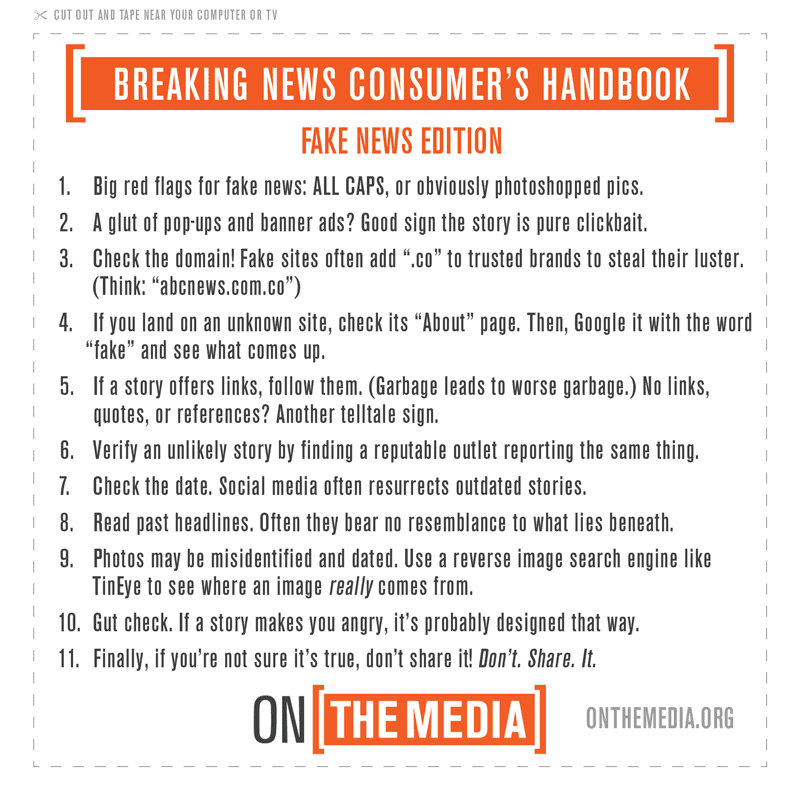Key Resources
Web Literacy for Student Fact-Checkers (Mike Caulfield): Free and excellent online book with strategies for evaluating and fact-checking online sources.
Evaluating Online Sources: A Toolkit: Rowan Libraries guide on evaluating sources through "lateral reading." Draws on the work of Web Literacy for Student Fact-Checkers.
Understanding Misinformation: Rowan Libraries guide on countering misinformation through a better understanding of the emotional brain and cognitive bias.
Glossary: The Language of News Literacy (Stony Brook University)
FAIR's Media Activism Toolkit (Fairness & Accuracy in Reporting): "How-to" guides on identifying and challenging misleading or unfair news coverage
Tips on How to Spot Fake News (FactCheck.org):
- Consider the source.
- Read beyond the headline.
- Check the author.
- What's the support?
- Check the date.
- Check your biases.
- Consult the experts.
Six Questions that Will Tell You Which Media to Trust (American Press Institute)
- Content type
- Source
- Evidence
- Interpretation
- Completeness
- Knowledge gained
Key Concepts for Media Literacy (Media Smarts):
- Media are constructions.
- Audiences negotiate meaning.
- Media have commercial implications.
- Media have social and political implications.
- Each medium has a unique aesthetic form.
Allsides: Compares news coverage from left, right, and center sources
Activities
Fake Out Game: Decide if social media posts are about true or face news stories.
Blue Feed, Red Feed: See the Liberal Facebook and Conservative Facebook, Side by Side (Wall Street Journal)
Check Your Own Claim (Indiana University East)
Skills and Strategies: Fake News vs. Real News (The Learning Network, NY Times): Activities and resources for teaching media literacy
From Gutenberg to Zuckerberg in 14 Lessons (Fall 2018 updated version) (Digital Resource Center, Stony Brook University): Materials from a News Literacy course. Individual lessons can stand alone or be used together.
Difficult Class Discussions
Guidelines for Discussing Difficult or Controversial Topics (University of Michigan)
Examples of Discussion Guidelines (University of Michigan)
Fake News edition
The radio show On the Media has created a number of "Breaking News Consumer's Handbooks" to help people evaluate whether or not information they encounter on the news and social media is credible. There are often confusing, competing accounts when a news story breaks. These handbooks are a reminder to be critical and thoughtful about what information is presented about a news story, how it is presented, and who might benefit from presenting information in a certain way.
Review the links below for more information about these handbooks, and to get a higher quality image for printing.
"The Breaking News Consumer's Handbook: Fake News Edition" (On the Media, November 16, 2016)
